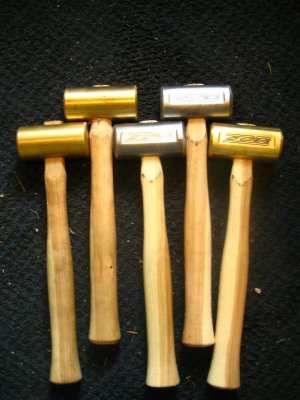Title really says it all. I'm working on making a soft hammer, how does brass compare to lead?
Thanks @Alexander for the brass cutoffs, and @Kris Jensen for the idea.
Toxicity of lead a consideration?
Any other materials for consideration?
This is more project for practice on the lathe than anything, but figure I should do it as best I can.
In for sake of discussion: would indium work for this application?
Start at :54 to get to the point.
--> Discussion only, indium is like $250 per kilo, haha
Thanks @Alexander for the brass cutoffs, and @Kris Jensen for the idea.
Toxicity of lead a consideration?
Any other materials for consideration?
This is more project for practice on the lathe than anything, but figure I should do it as best I can.
In for sake of discussion: would indium work for this application?
Start at :54 to get to the point.

